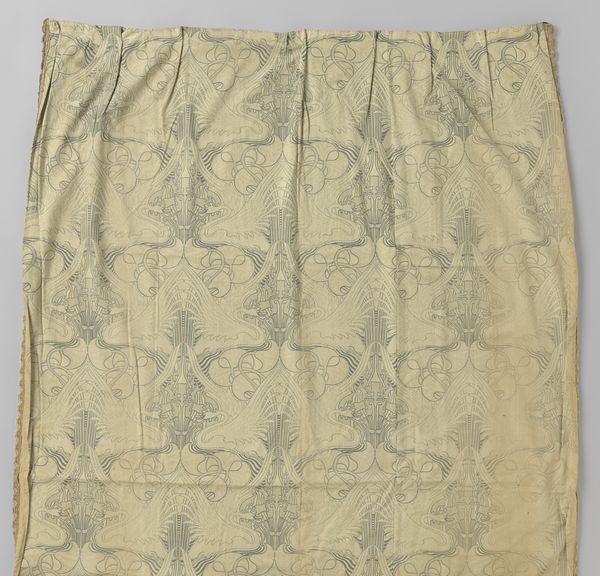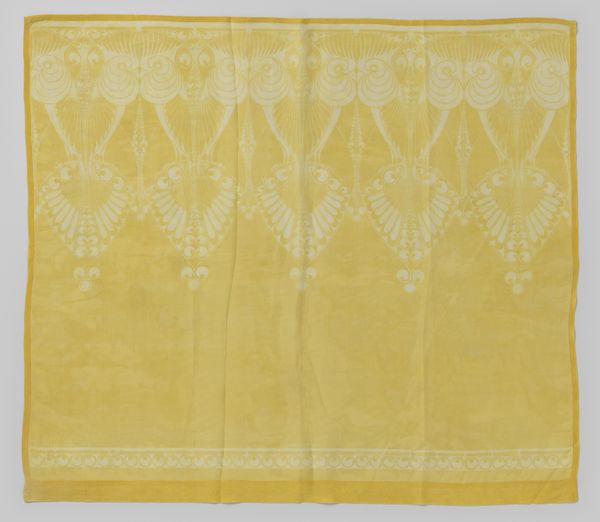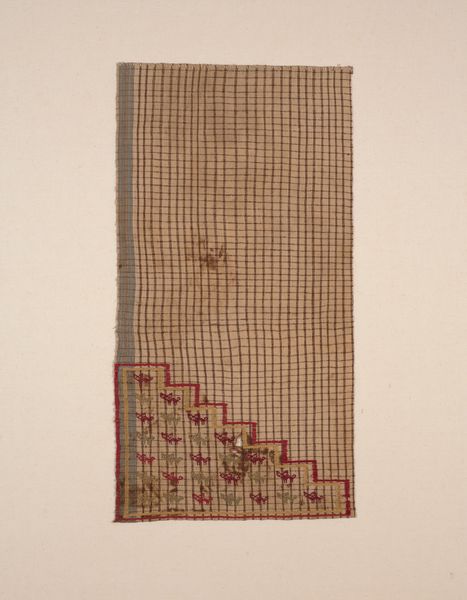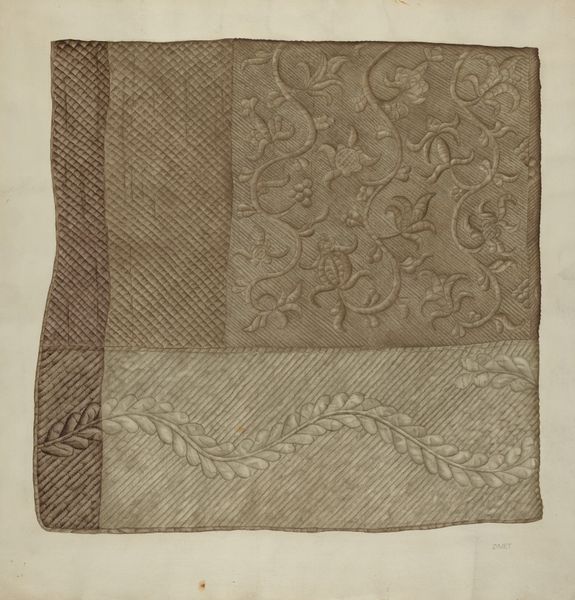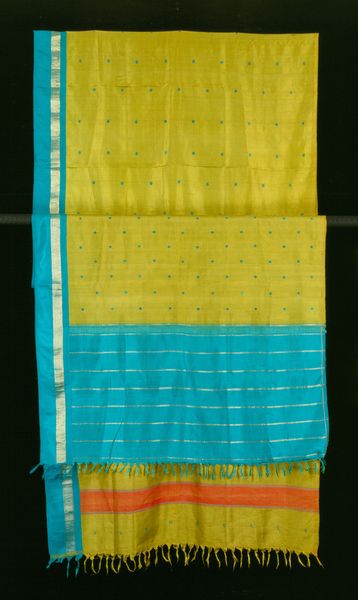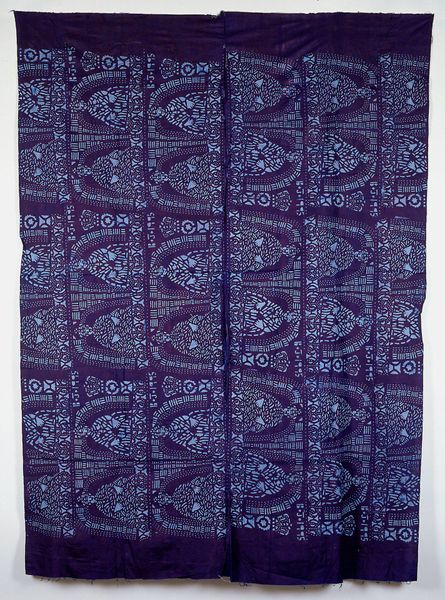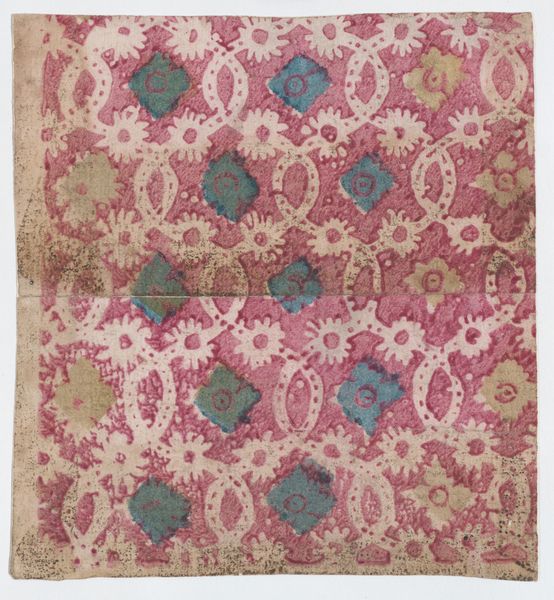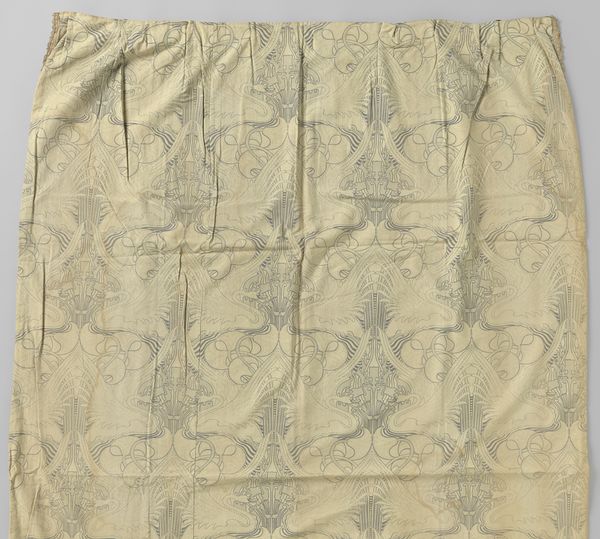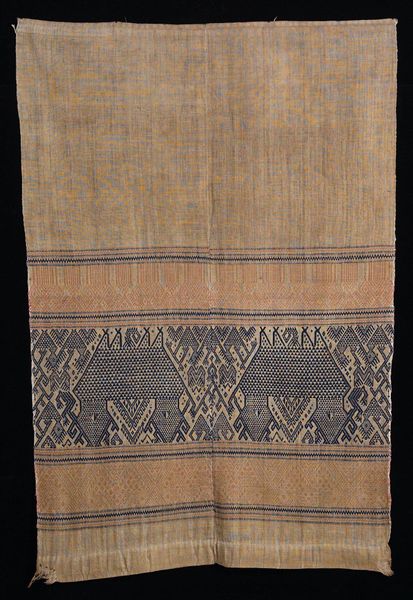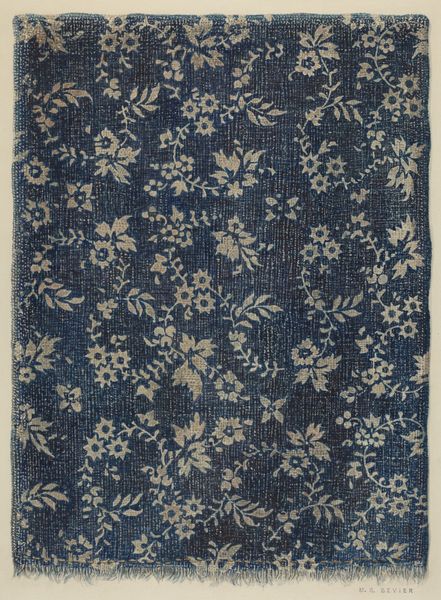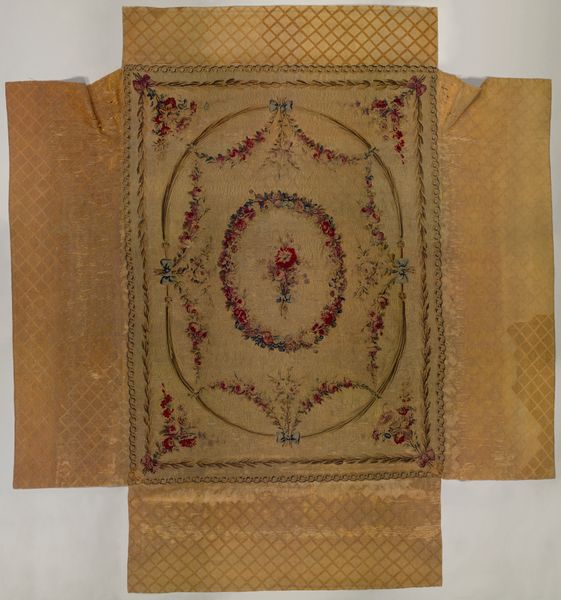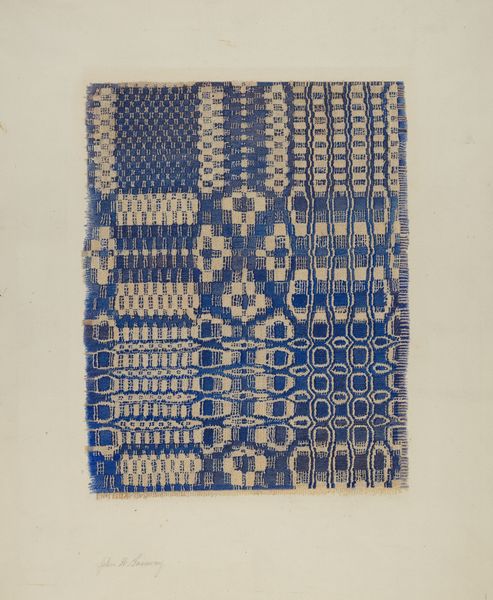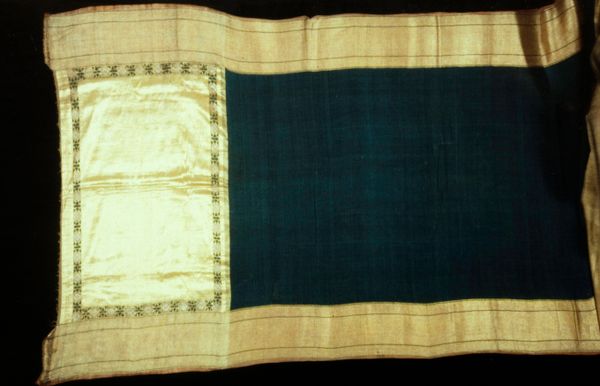
silk, textile
#
water colours
#
silk
#
textile
#
coloured pencil
#
mixed medium
#
mixed media
Dimensions: overall: 35.1 x 24.5 cm (13 13/16 x 9 5/8 in.) Original IAD Object: 20" square
Copyright: National Gallery of Art: CC0 1.0
Curator: Ah, I adore this piece. This is Samuel Faigin’s "Blue Silk Scarf," likely from around 1937. The materials alone—silk, watercolor, colored pencil, even what looks like collage—give it such tactile depth. Editor: My first thought is—the dye. That particular shade of blue is mesmerizing, almost hypnotic. It speaks of indigo fields, or perhaps some alchemical process. But beneath it, is there even a drawing at all? It feels so subtle. Curator: The "drawing," as you call it, is an entire world! Look closely. Hidden among those cerulean depths are fantastical creatures. Birds? Mythological beasts? Faigin wasn’t just creating a decorative textile; he was conjuring a romantic vision. Editor: That "conjuring," as you say, depends heavily on industrial production, though. The dye itself—likely synthetic—the weaving process...mass production makes a luxury item available to many, while concealing the labour that produced it. Is the luxury surface obscuring real inequality? Curator: Oh, come now! To only see it through a lens of industrial critique feels so limiting. It’s meant to be felt, to be draped, to whisper stories against your skin. What do the animals mean to you, really? I think this resonates with themes of metamorphosis. Editor: But, Samuel Faigin also lived during an era profoundly shaped by global trade. Examining where the raw materials came from and under what conditions reveals a far more complicated and global story—one with economic and ethical implications. The exotic is still labor! Curator: I suppose you could strip the romance out and think only of silk threads, water sources used in dying...or you could succumb, like me, to the beauty of it. I feel transported. Editor: It is lovely, even if its material story whispers about exploited people or damaged environment. We need beauty and responsibility both. I must ponder its physical origins even if this dims its glow. Curator: Precisely. It holds both worlds within its folds. The ephemeral and the tangible—woven together. Editor: Indeed, making a study in art and capitalism necessary for our time.
Comments
No comments
Be the first to comment and join the conversation on the ultimate creative platform.
